The commonly used phrase “car vacuum system” and the common issue of “how to find a vacuum leak” might confuse many car owners, as “vacuum” here is not the same household cleaning appliance that most of us are familiar with. “Vacuum system” is an important concept you must must must understand if you are to have a long-term relationship with your vehicle.
Vacuum system is related to the working of a car’s internal combustion engine, the delicate and complex part that runs the car. In short, an engine works like a giant “air pump”.
This vacuum system drives the combustion engine and its efficiency directly affects engine performance. Thus if you want to be well in-tune with your car and give it proper DIY maintenance, you must start by understanding the ins and outs of your car engine and its vacuum system.
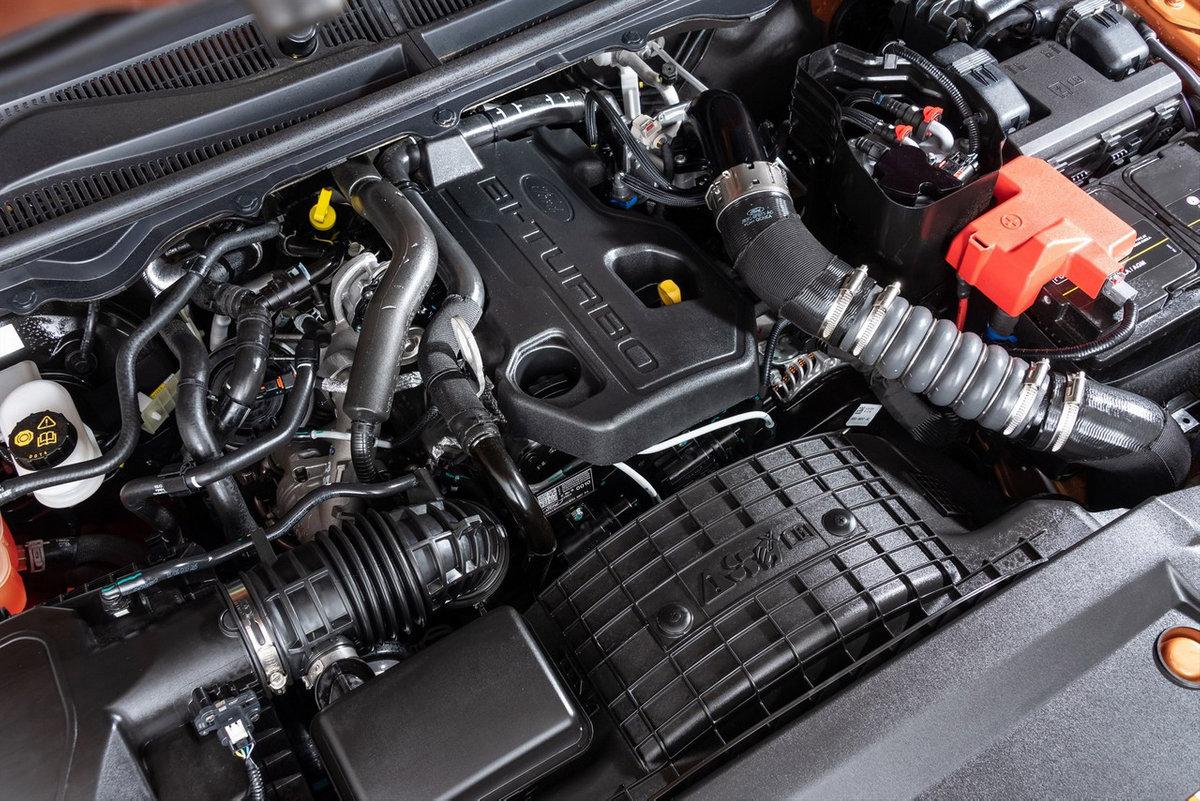
This guide is the most comprehensive, easy to understand guide on car vacuum system on the internet. It will explain how a car vacuum system works, how to find a vacuum leak, a common problem that calls for immediate attention, how to fix a vacuum leak and how to prevent vacuum leaks.
Contents
How a car vacuum system works and why it affects engine performance
The engine is the part of your car that you must get familiar with due to its vast importance. Understanding how the engine works, including its “vacuum” system and how this vacuum affects engine performance, is what you must do before learning how to find a vacuum leak and how to fix it as well as any other engine-related issue.
The Role of Air in A Combustion Engine
An internal combustion engine creates the energy that runs a car. But how exactly does this “combustion” work to generate energy?
It’s called internal “combustion” engine as air and fuel combust inside an engine, creating the energy which moves the piston, which in turn “move” the car. The rate of airflow into the engine is an important factor that determines how much energy the engine produces.
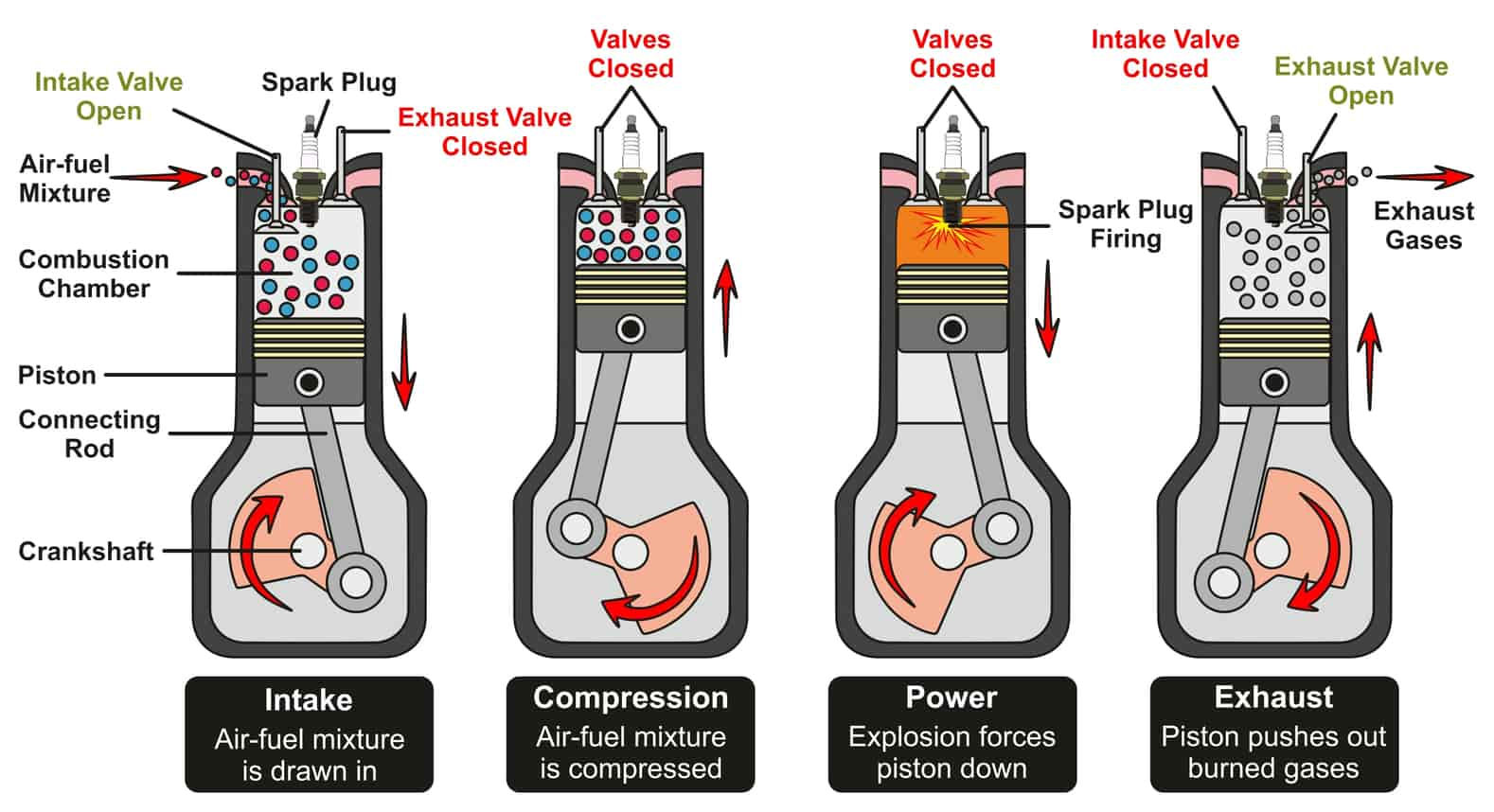
The engine block is house to engine cylinders, inside of which the pistons move up and down, creating energy. The more cylinders an engine has, the more powerful it is. Engines usually have four, six or eight cylinders.
In a four-stroke engine, during the intake stroke, the intake valve opens. The piston moves downward and moving the crankshaft with it, creating a suction or “vacuum” that sucks in air and fuel, letting them enter the combustion chamber. The valve then closes. How much of this mixture is allowed to enter is controlled by the butterfly throttle, a plate that rotates, in the intake valve.
When the piston reaches the top of its compression stroke, the mixture is compressed, while the spark plug ignites the compressed mixture and creates a combustion, sending the piston down on its power stroke. When the piston reaches the bottom of the stroke, the exhaust valve opens, pushing the exhaust gases out of the cylinder.
Vacuum and Throttle Position
In short, the pumping of the piston plus the restriction of the throttle plate in the intake valve affect the engine’s “vacuum”, or the difference between the air pressure inside the cylinder and the air outside. This is usually measured in inches of mercury or Hg.
A healthy engine should produce a steady 17 to 21 in. Hg of vacuum at idle.
An engine’s vacuum is highest at idle when the throttle position is closed or slightly opened, restricting the airflow moving through the intake valve, making the engine tries to suck hard to pull in air and fuel. When the throttle is opened, more air freely enter, decreasing the vacuum in the combustion chamber.
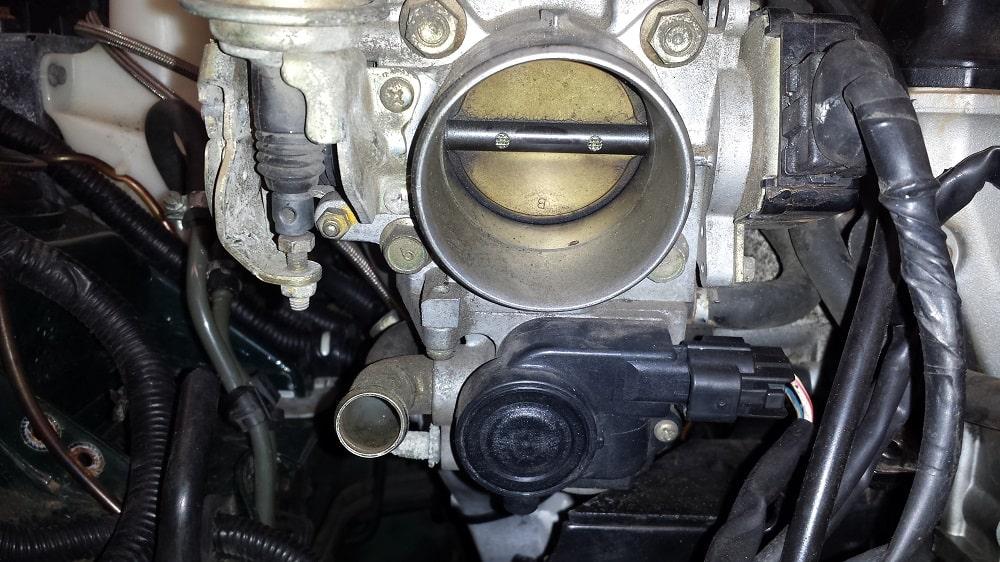
Vacuum affects performance of engine and other parts
An engine’s vacuum is such an important concept since an engine needs the correct air and fuel ratio to perform smoothly. In addition, depending on the vehicle, many other parts of a car require the correct vacuum to function properly. One example is the brake booster, without which you would need a whole lot of physical efforts and time stop your car.
READ MORE
- Types Of Car Engines – Everything You Wanted To Know
- What’s The Most Misunderstood Thing About Car Engines?
What is a vacuum leak?
A vacuum leak happens when additional air flows into the combustion engine. This extra amount of air is not detected or “read” by the engine computer, which calculates the ideal amount of fuel to inject into the engine, thus creates an incorrect air-fuel mixture usually referred to as “lean” air-fuel ratio. The result is the engine will run poorly or stall.
Where can a vacuum leak develop?
To know how to find a vacuum leak with ease, you should know where a vacuum can most likely occur. A vacuum leak can develop in many engine parts, including the following most common spots:
- The intake manifold: the engine part that supplies the air-fuel mixture into the cylinders.
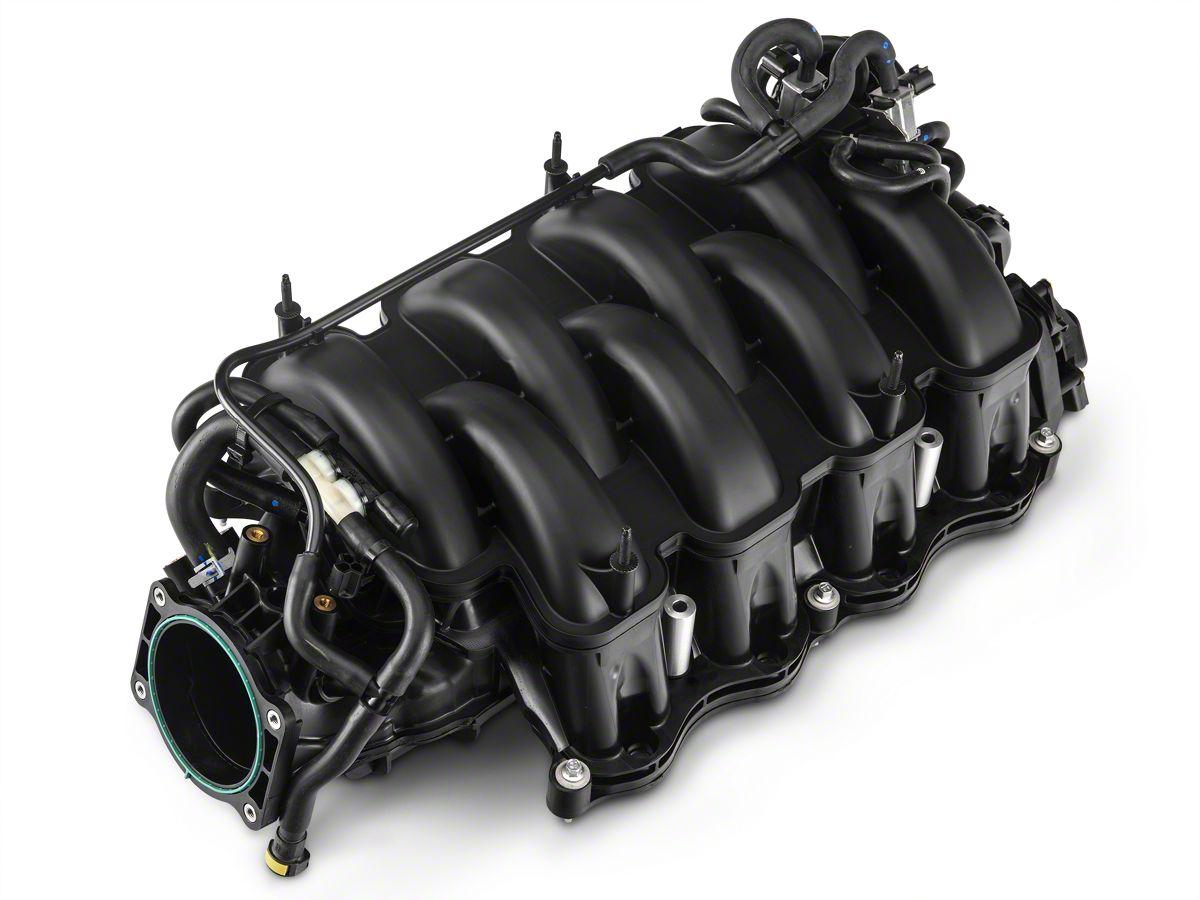
- The intake manifold gasket: the seal that seals the intake manifold tightly to the engine.
- The throttle body: the part of the intake manifold that houses the butterfly plate, which closes and opens to control the amount of air entering the engine’s combustion chamber.
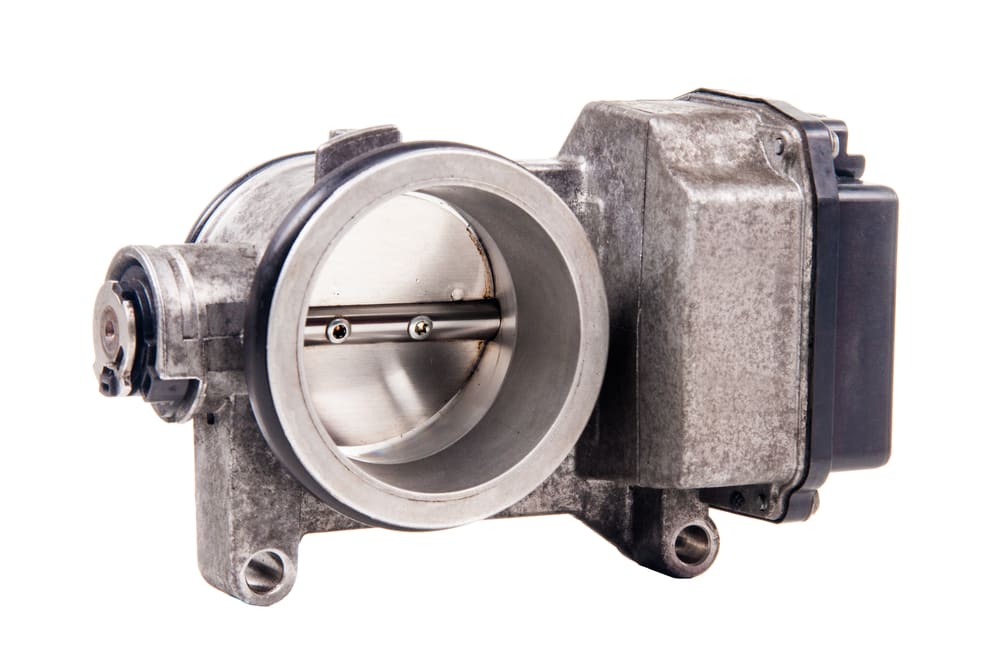
- The throttle body gasket: the seal that prevents air from leaking into the space between the intake manifold and throttle body.
- Vacuum tubes and hoses: Under-hood temperature can cause rubber and plastic vacuum tubes and hoses to break or crack, causing a leak. These rubber and plastic tubes and hoses connect with different parts of a car that consume the engine’s vacuum to function, such as the exhaust gas recirculation valves, fuel pressure regulators and vacuum-operated actuators.
The parts that the vacuum tubes and hoses connect to can fail and cause a leak too:
- The EGR (Exhaust gas recirculation) valves: which redirects exhaust gases back into the intake manifold and thereby reduces a car’s emissions.
- The fuel pressure regulators: This regulator controls the pressure of fuel that is supplied to an engine via the fuel injectors, thereby ensuring that these fuel injectors receive and distribute fuel at a certain rate.
- The vacuum-operated actuator: a vacuum-operated actuator uses the engine’s vacuum to operate headlights, air conditioning and cruise control system, as opposed to electrical actuators in other cars that don’t use the engine’s vacuum.
- The brake booster: is used to reduce the amount of pressure a driver needs to exert on the pedal for braking. To do this, when the brake pedal is pressed down, the brake booster uses vacuum from the engine to amplify the force that the brake pedal puts on the brake master cylinder, which converts this force into hydraulic pressure used for braking. If the diaphragm in the brake booster fails, a leak can occur. A symptom of this failure will be a brake pedal that’s hard to press.
Symptoms of a vacuum leak
An imbalance of air and fuel in the combustion engine can result in the following:
- The Check Engine light is illuminated on the dashboard.
- Increase in emissions: an engine with too much air will burn hotter thus generates more oxide emissions.
- Fuel economy decreases: With too much air, the engine controller will try to compensate by adding more fuel to the air-fuel mixture, resulting in deteriorated fuel economy.
- A stalling engine.
- Engine idles faster than usual.
- Engine idles roughly.
- A hissing sound coming from the engine area when the car is running.
- Poor acceleration.
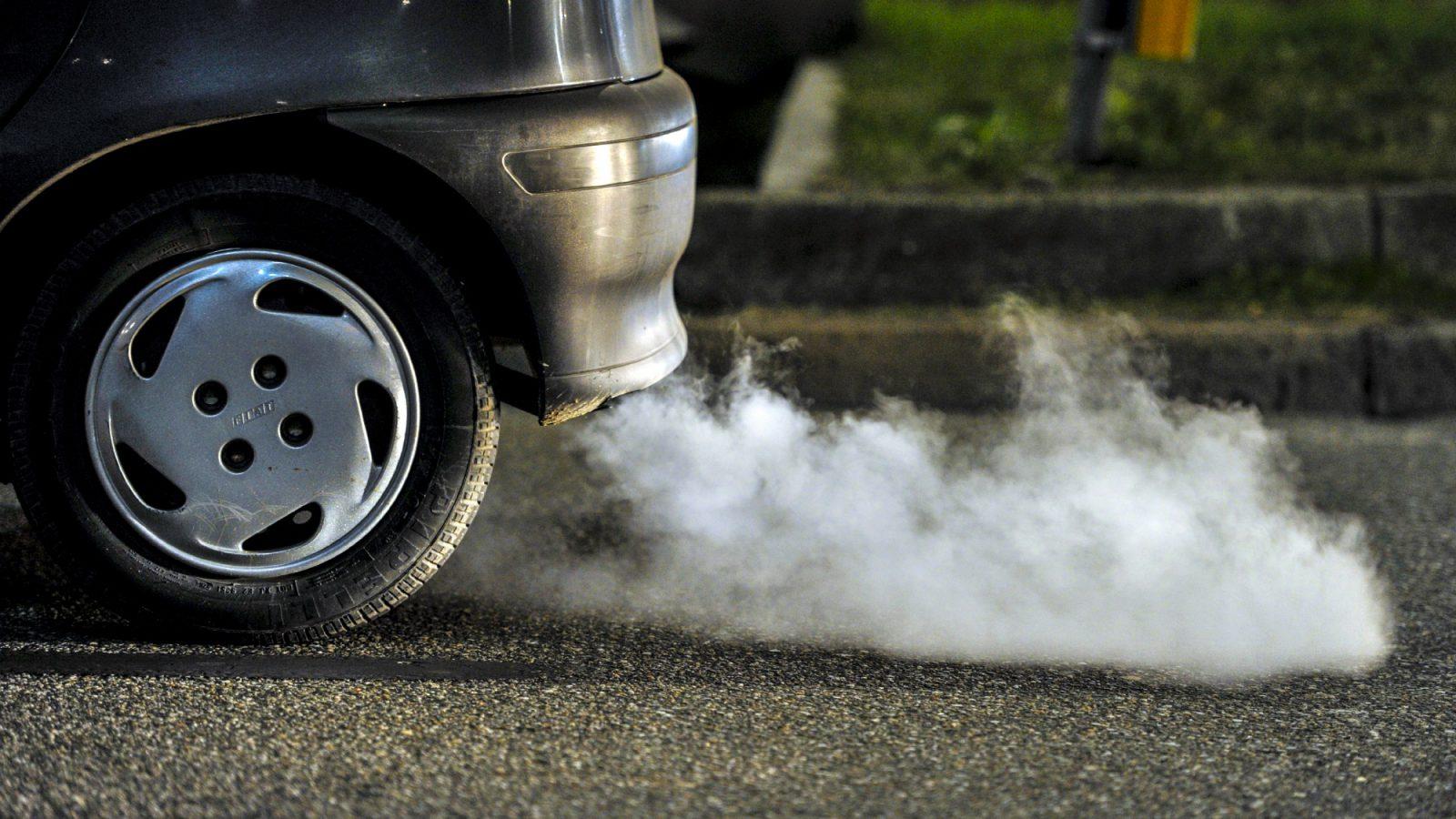
Can I drive with a vacuum leak?
You can drive with a vacuum leak. However a vacuum leak causes the engine to overheat, raising the under-hood temperature and thus speed up the deterioration of rubber and plastic parts, such as the vacuum hoses and tubes.
You should inspect to find the vacuum leak and get this fixed as soon as possible. Especially if a leak occurs in the brake booster, you must fix it before you drive.
How to find a vacuum leak at home? Below are the best DIY vacuum leak tests clearly explained.
READ MORE
How to find a vacuum leak
A vacuum leak can occur in a number of parts, thus you might need to perform more than one vacuum leak tests to find a vacuum leak.
Visual test
A vacuum leak overheats the under-hood, making rubber and plastic parts deteriorate quickly. This is the most common cause of a vacuum leak.
Therefore a good place to start our vacuum leak test is the rubber vacuum hoses, plastic vacuum tubes and the rubber engine intake tubes. These parts can become harder or brittle, thus more easily crack or break. The many fittings that connect the tubes and hoses are also subjects to cracking and breaking.

Many accessories in a car consume vacuum from the engine to function, including the air conditioner and cruise control system. Visually inspect vacuum tubes that distribute engine’s vacuum to these accessories for cracks and breakings.
Sound test
A leak will produce a distinctive hissing or whistling sound when you poke at it while the engine is running. It might be difficult to pick up; if you have a mechanic’s stethoscope, remove the probe and use a long rubber tube to perform this sound test.
Soapy Water method
By far this is the easiest and cheapest method. Don’t worry, your engine will not be affected by that tiny amount of water.
Simply use a spray bottle to spray a mixture of soap and water around suspected leak areas. The leak will suck in water, which you might be able to see with bare eyes. Otherwise, the engine will temporarily smooth out as the water temporarily seal the leak, improving the air-fuel ratio.
Smoke test
This is by far the safest and most reliable vacuum leak test usually performed by mechanics. Use an automotive smoke can and spray it near the intake manifold. You will see this smoke coming out from leaks in the vacuum hoses.
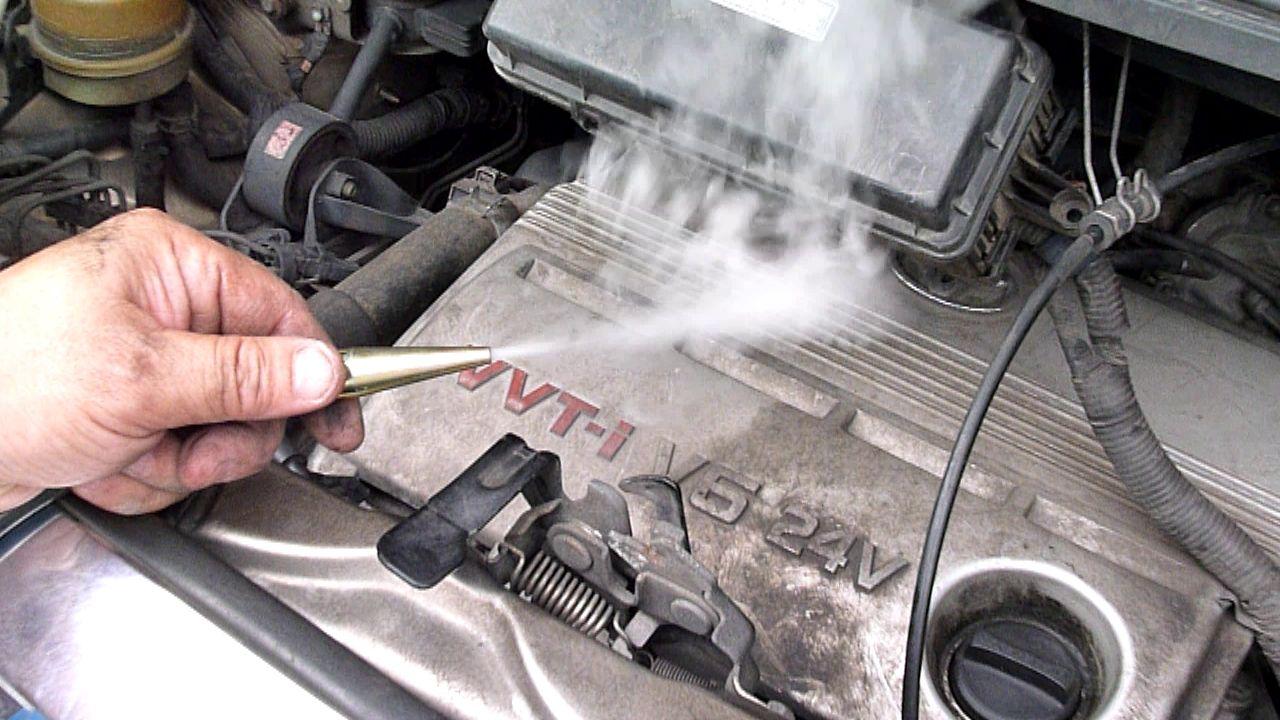
Flammable material test
Note that these tests are dangerous for using flammable liquid and gas, thus it’s best not to perform alone at home, however you should know about them to be aware.
Carburetor cleaner
Let the engine run at idle. Spray carburetor cleaner onto the suspected leak area, but note that it is flammable, so spray very sparingly with caution. If you have a fire extinguisher, have it ready.
If there is a leak, for example in the throttle body gasket or intake manifold gasket, the inflammable spray will compensate for the lack of fuel in the lean air-fuel mixture. If the engine is idling rough, it will smooth out for a short while when the spray is consumed by the engine. Otherwise the engine will increase its idle speed temporarily.

Propane torch
This method is similar to using carburetor cleaner spray. A propane torch is the type that is used in cooking and is easy to find. Remember to keep a fire extinguisher ready at hand as propane gas is also flammable.
Keep the engine running at idle, hold one end of a long rubber hose close to the area of suspected leak, lit a propane torch at the other end of the hose. Just like with the flammable carburetor cleaner, the flammable propane gas compensates for the lean air-fuel mixture that goes into the engine’s combustion chamber, thus speeding up or smooth out the idling engine.
How to fix a vacuum leak
Fixing a vacuum leak is pretty straightforward. Simply replace the failing tubes or hoses, the most common causes of a vacuum leak. In some cases, if the damage is at one end of a vacuum hose, you can cut away at most half an inch and reconnect the hose.
A temporary fix before you can make the replacement is wrapping double-thick, tough all-weather shell duct tape like Gorilla tape around the failing hose to keep the leak sealed.
How to prevent a vacuum leak
Since a vacuum leak can be difficult to find, preventing it makes much more sense.
Simply regularly inspect your vacuum tubes and hoses and replace them if they have become hard and brittle due to under-hood temperature. Do not wait until they crack or break, causing a troublesome vacuum leak.
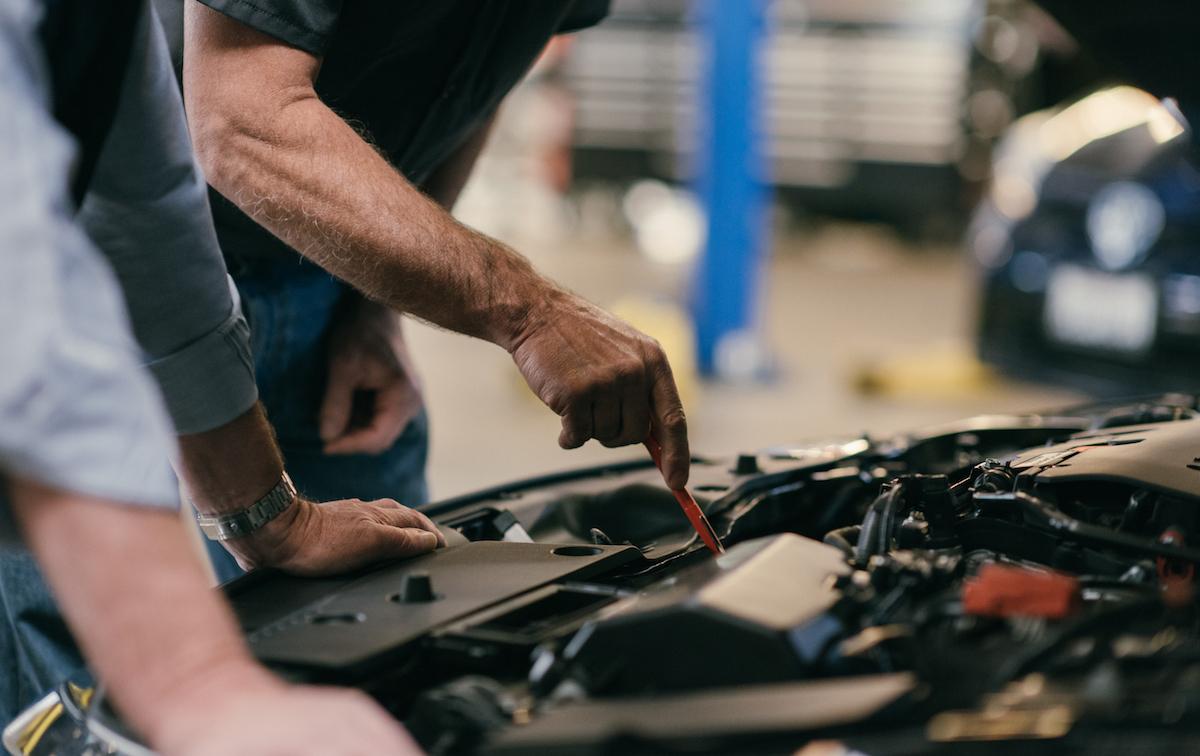
READ MORE
- Motor Vs Engine: The Definitions And Differences
- How Do Diesel Engines Work?
- Engine Tuner – Is It Worth It For Your Truck?
This comprehensive guide is rather long, however you must understand how the engine works to know how to find a vacuum leak.
How an engine’s vacuum system works is a concept you must firmly grasp in order to stay well in tune with your car, as this vacuum affects whether your car can run at all and also affects many vital parts of your vehicle. Vacuum leaks are a common problem, thus knowing how to find a vacuum leak, how to fix and prevent it is a must.


